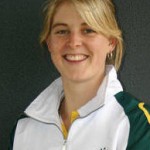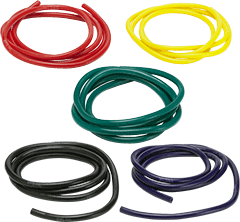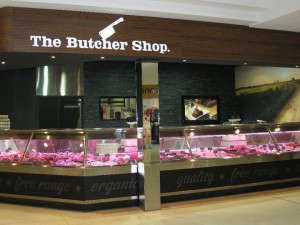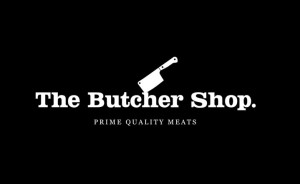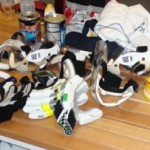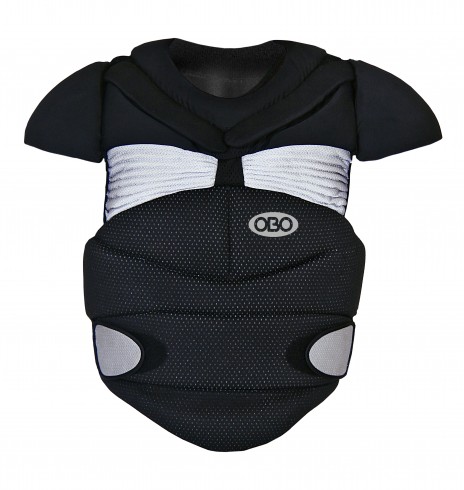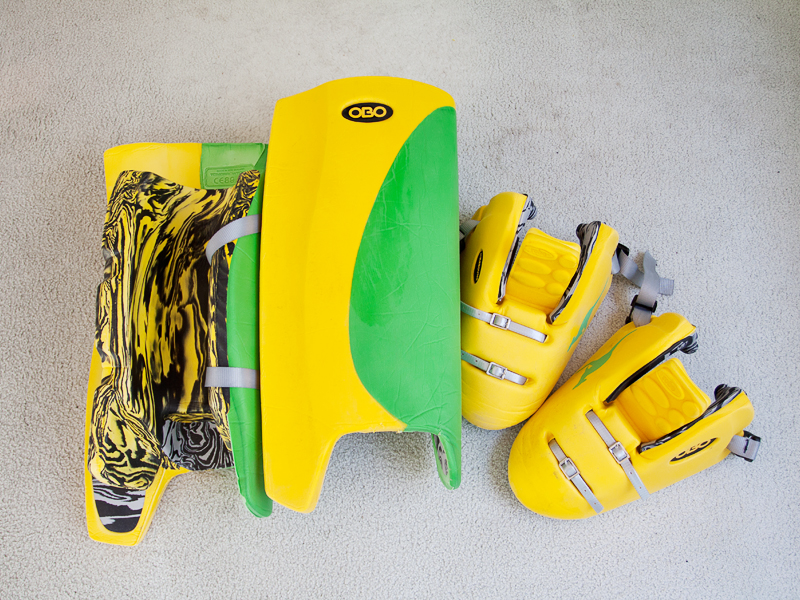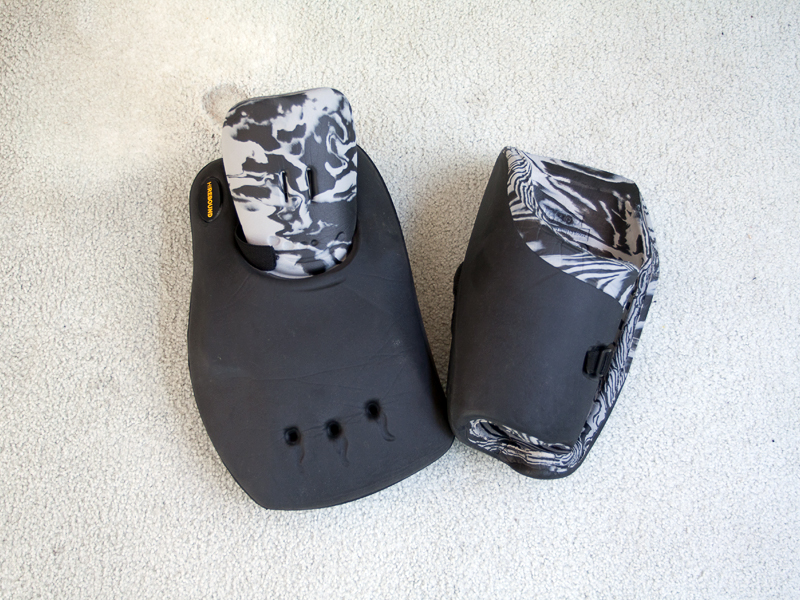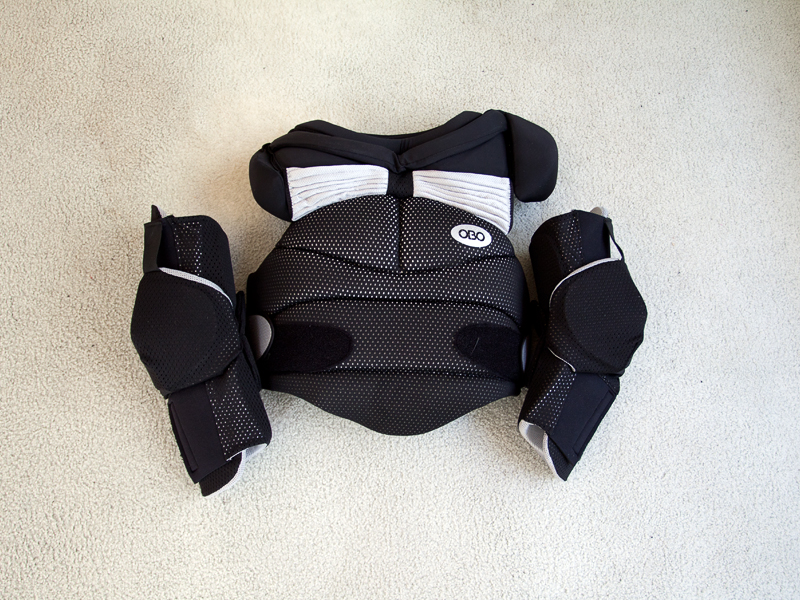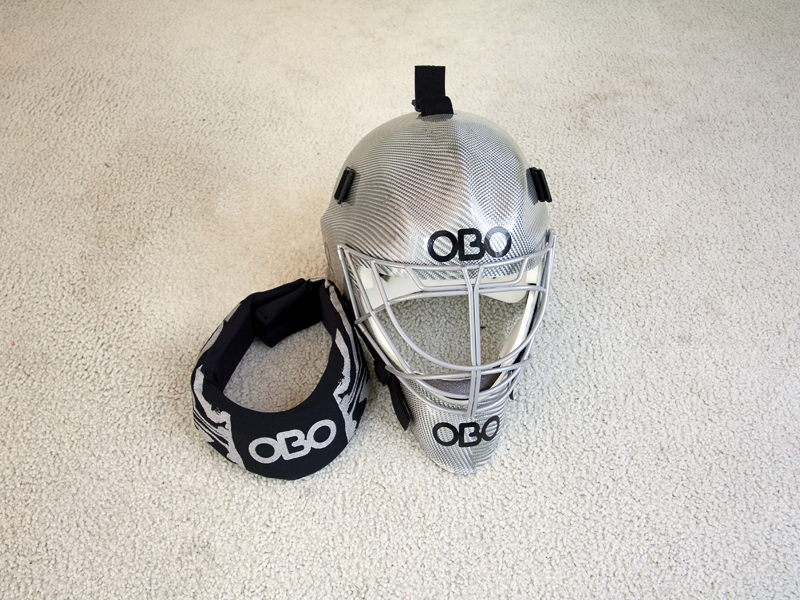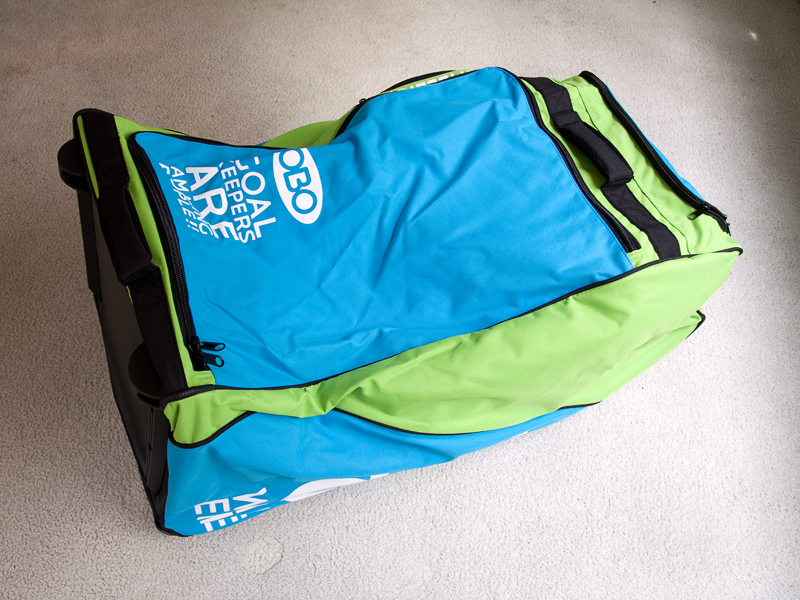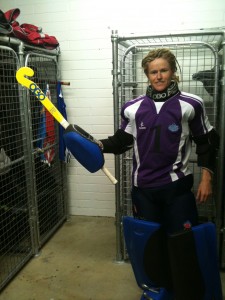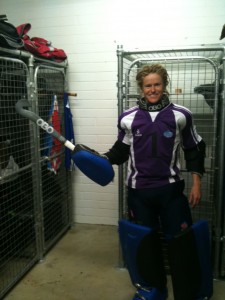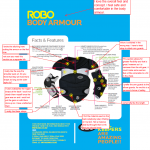As a travelling athlete I often find myself having to be creative in order to complete my gym workouts or rehab exercises whilst away. A holiday at the beach, a trip overseas, a night in a hotel or just time away from your local gym are not good enough reasons to miss or drop back your strength training. I work very hard whilst in the gym so can not afford to go backwards when I am away on a tour or on a break from training. I have provided some tips below that I use so have a read and feel free to add some of your own. Keep in mind that I am talking purely about weights training and not cardio training.
If you are staying in a hotel whilst away then this is the type of gym you may have access too. A lot of hotels do have gym facilities but they are usually small and have minimal equipment. All you can do is make the most of what you have got.
There will almost always be a few dumbbells so use these to make basic exercises more difficult. eg. squats – double leg, single leg; lunges – forward, lateral; calf raises, sit-ups and all arm exercises. If there is a machine then make the most of the various exercise options it has. You can always lower the weight if its not something you normally do as part of your program. For chin ups you just need a bar or railing and push ups simply require some floor space.
A fit ball is another item that you may find in a hotel gym or have at home yourself. These are great for balance and increasing the difficulty of an exercise by providing an unstable base. Any arm exercise can be made harder by sitting on the ball or lying on it in a bridge type position. Again use your dumbbells here. There are numerous abdominal exercises around that are great when using a fit ball. Just sitting on the ball in good posture with your feet off the ground is great for your core strength and balance.
Theraband – What a great invention. This is something that I use everyday and carry with me whenever I travel overseas or interstate. They come in different colours and each colour has a different level of resistance. I use them mostly to strengthen my shoulders and prevent injuries as goalkeepers are very prone to shoulder problems. They are very easy to use and actually quite versatile. They can be tied to a door, jammed in a door, held under your feet or wrapped around anything that is heavy or fixed to the ground. You can just hold the end and pull or make a loop to put your hand or foot through. So many options. They can replace any exercise that you do on a pulley machine at the gym.
Now if all else fails and you cant find any equipment, proper weights or a gym then just use your friends. Find a friend that weighs the appropriate amount and then squat them. You may need to start off with a small child and please make sure you maintain good technique throughout. * Actually…Don’t try this at home!!
Finally, as with all exercise, it is very important you warm up and cool down appropriately. Stretching is a great way to keep your muscles in good shape as is using a foam roller. This is similar to getting a deep tissue massage but you can do it yourself and of course control the level of discomfort you cause. And yes it can be uncomfortable. You use it by lying on top of the roller then moving your body around so it moves up and down the particular muscle or muscle group you want to release. Quads, Hamstrings, adductors, calves, ITB or Gluts. You can also use it up and down your back.
I hope you have found my suggestions helpful. Please comment below if you have other ideas. I would love to hear from you.
These suggestions are my own and have developed over time with assistance from experienced professionals. Please seek guidance from your Physio, doctor or coach before attempting any of the above exercises. Especially squatting your friends!!
How to do a gym workout on holidays | rachaellynch.com.au
